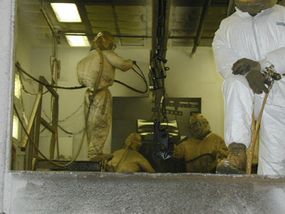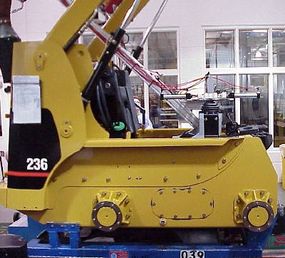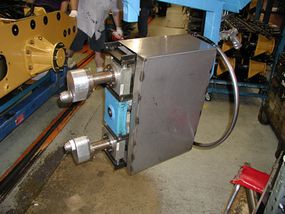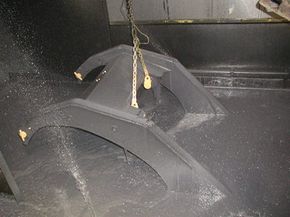Building the Skid Steer Loader and Multi Terrain Loader
Caterpillar takes every bit as much care in the building of loaders as it does in the building of the much larger, more expensive machines it manufactures. Great measures are taken to ensure that the loaders leaving the assembly line meet the high expectations of Caterpillar's customers:
- Several layers of corrosion-resistant coatings are applied to most metal components.
- Quality validation takes place throughout the process, not just afterward.
- Electronically controlled torque tools for tightening bolts are utilized.
Corrosion-Resistant Coatings
One of the most impressive things about the Caterpillar Skid Steer Loader and Multi Terrain Loader assembly plant is the coating and painting operation. Caterpillar has contracted with a company called Metokote to build an electrocoating and painting facility that is in the same building as the assembly line.
Advertisement
All of the metal parts, including the frame, roll cage, loader arms, buckets and most brackets on the machine, are sent though this process, which starts with a thorough cleaning. The parts are then coated with zinc phosphate and sealed with a chrome sealant. This gives them a base layer of protection in case the paint and electrocoat are scratched.
After the zinc phosphate and sealant are applied, the parts are electrocoated. They pass through a tank of water filled with paint particles. The tank and particles are electrically charged to 200 volts, and the hangers that hold the parts are grounded. This attracts the charged paint particles to the grounded parts, coating the parts uniformly. After the parts come out of the tank, they are cured in an oven until the coating hardens.

After the electrocoat is cured, any of the parts that are going to be exposed to sunlight are painted in a spray booth. This multi-layer protection makes the parts rust resistant -- so resistant that if a scratch were to penetrate all of the coatings down to the bare metal, the zinc phosphate would keep any rust from spreading.
In-Process Validation
Caterpillar tests the loaders during the manufacturing process. For instance, they test for leaks in the hydraulic systems before the body is attached to the frame of the machine.

If a problem is found at this point, it's much easier to fix than after the machine is fully assembled.
Electronic Torque Control
A lot of construction machinery is assembled using air-powered impact wrenches (like the ones you see your mechanic using). These wrenches are notoriously inaccurate (plus or minus 10 percent, at best) at controlling the torque on a bolt or nut.
Getting the correct torque on the nuts and bolts is important. The torque is used as an indicator for how much the bolt stretches. For a good joint, the bolt has to stretch a little (this is what gives it its clamping force). A bolt with too little stretch won't hold the parts on tightly, and could even work loose over time. A bolt with too much stretch could break during installation, or be weakened during installation and break later.
The Caterpillar assembly line uses all electronically controlled wrenches. These wrenches can control the torque on the bolts to within 2 percent, ensuring a more accurate amount of bolt-stretch.

Some joints are so critical to the machine that an even more advanced technique is used. For instance, on the skid steer loader, the lug nuts that hold the wheels on are tightened by a special, electronically controlled tool that uses the torque-turn method. This tool tightens the nuts until a threshold torque is reached, and then it turns them a fixed amount -- maybe one more revolution. This enables even more accurate control of the bolt stretch.
